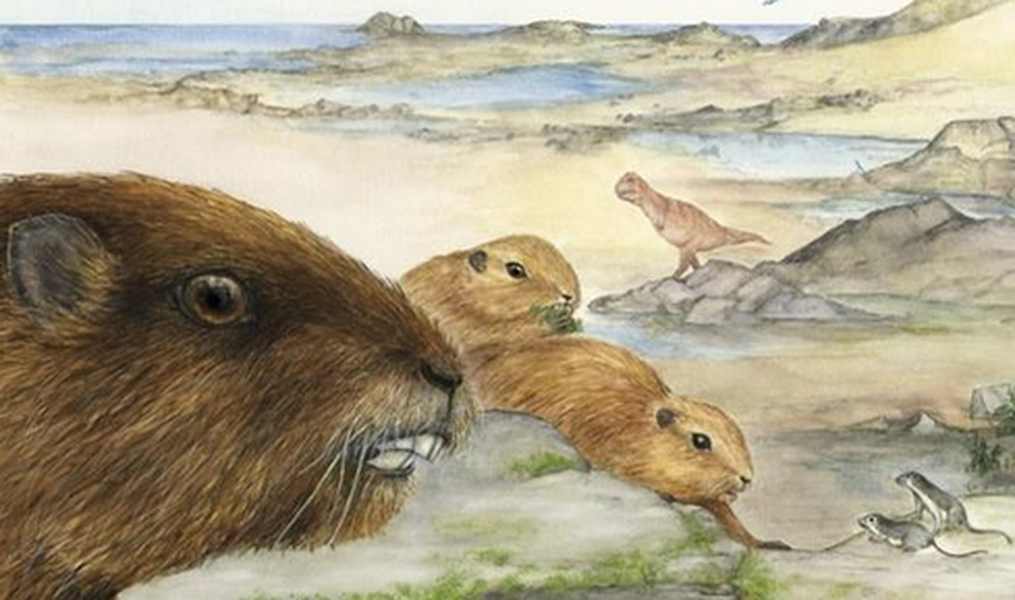Scientists identify prehistoric 'Punxsutawney Phil on steroids'


A fossilized skull found in Madagascar has given scientists a new look at some of the mammals that coexisted with the dinosaurs.
The five-inch-long skull was identified as belonging to a groundhog-like creature the scientists named "Vintana sertichi."
The animal, detailed in a paper in the journal Nature, weighed an impressive 20 pounds and was between 20 and 24 inches long, the scientists estimate. David Krause, a vertebrate paleontologist at Stony Brook University who led the research team, compared the Vintana to a groundhog, telling National Geographic that the animal was "Punxsutawney Phil on steroids."
The Week
Escape your echo chamber. Get the facts behind the news, plus analysis from multiple perspectives.

Sign up for The Week's Free Newsletters
From our morning news briefing to a weekly Good News Newsletter, get the best of The Week delivered directly to your inbox.
From our morning news briefing to a weekly Good News Newsletter, get the best of The Week delivered directly to your inbox.
The scientists' analysis suggests that Vintana, which lived during the late Cretaceous period between 66 million and 72 million years ago, was a plant-eater with sharp eyesight and a strong sense of smell. Its odd features helped it avoid becoming "a very fine hors d'oeuvre" for dinosaurs, Krause told The Associated Press.
The find is especially intriguing, the scientists note, because most mammals in that time weighed less than one pound. The Vintana sertichi is the second heaviest mammal identified from the dinosaur era and the largest from the ancient Southern Hemisphere.
A free daily email with the biggest news stories of the day – and the best features from TheWeek.com
Meghan DeMaria is a staff writer at TheWeek.com. She has previously worked for USA Today and Marie Claire.
-
 Blue Origin launches Mars probes in NASA debut
Blue Origin launches Mars probes in NASA debutSpeed Read The New Glenn rocket is carrying small twin spacecraft toward Mars as part of NASA’s Escapade mission
-
 Dinosaurs were thriving before asteroid, study finds
Dinosaurs were thriving before asteroid, study findsSpeed Read The dinosaurs would not have gone extinct if not for the asteroid
-
 SpaceX breaks Starship losing streak in 10th test
SpaceX breaks Starship losing streak in 10th testspeed read The Starship rocket's test flight was largely successful, deploying eight dummy satellites during its hour in space
-
 Rabbits with 'horns' sighted across Colorado
Rabbits with 'horns' sighted across Coloradospeed read These creatures are infected with the 'mostly harmless' Shope papilloma virus
-
 Lithium shows promise in Alzheimer's study
Lithium shows promise in Alzheimer's studySpeed Read Potential new treatments could use small amounts of the common metal
-
 Scientists discover cause of massive sea star die-off
Scientists discover cause of massive sea star die-offSpeed Read A bacteria related to cholera has been found responsible for the deaths of more than 5 billion sea stars
-
 'Thriving' ecosystem found 30,000 feet undersea
'Thriving' ecosystem found 30,000 feet underseaSpeed Read Researchers discovered communities of creatures living in frigid, pitch-black waters under high pressure
-
 New York plans first nuclear plant in 36 years
New York plans first nuclear plant in 36 yearsSpeed Read The plant, to be constructed somewhere in upstate New York, will produce enough energy to power a million homes



